Top Trending Lifestyle News & Highlights


How to remedy the five typical foods that may prevent your body from absorbing vitamin D
Immune system performance, bone health, and general well-being all depend on getting adequate vitamin D. While sunshine exposure and supplements might assist, many everyday meals may actually interfere with your body’s absorption of this vital mineral. Understanding these relationships can make a substantial difference in maintaining optimal vitamin D levels. Even a diet high in vitamin D or appropriate supplementation may not be as beneficial if we eat foods that prevent the absorption of the nutrient. Many people are unaware that their intake of vitamin D isn't being properly utilized by their body because of factors like fat content, specific minerals, or compounds in certain meals that can lower its bioavailability.To find out which five frequent foods might hinder the absorption of vitamin D and the mechanism underlying their effects, we consulted with an expert.According to Ashlesha Joshi, a nutritionist and fitness dietitian at Tone 30 Pilates, "some foods can affect how efficiently the body absorbs or uses vitamin D," as reported by indianexpress.com. The most prominent of these are foods that include phytates, like whole grains and legumes, which can bind to minerals and vitamin D and hinder absorption. Caffeine from tea or coffee in excess can also cause problems by lowering the expression of vitamin D receptors in the intestines. Regular alcohol consumption damages liver function, which is necessary for the conversion of vitamin D into its active form. Trans fats and hydrogenated oils included in processed foods might hinder the absorption of fat-soluble vitamins, such as vitamin D. Finally, because vitamin D is fat-soluble and needs dietary lipids for effective uptake, particularly high-fibre diets, while generally healthy, might occasionally limit absorption efficiency.According to Joshi, "since vitamin D is fat-soluble, combining it with good fats can greatly enhance absorption." For example, eating foods high in vitamin D, such as salmon, eggs, or fortified cereals, together with foods high in healthy fats, like avocado, olive oil, or almonds, can improve absorption. Consuming foods high in vitamin K2, such as fermented soy or cheese, also aids in calcium metabolism and complements vitamin D. She adds that timing is also important, saying that consuming vitamin D-fortified meals or pills after your main meal of the day, when fat intake is highest, helps maximize absorption. Regular exposure to the sun, even for a short while each day, naturally raises vitamin D levels even more.
Published 21 Oct 2025 08:17 PM
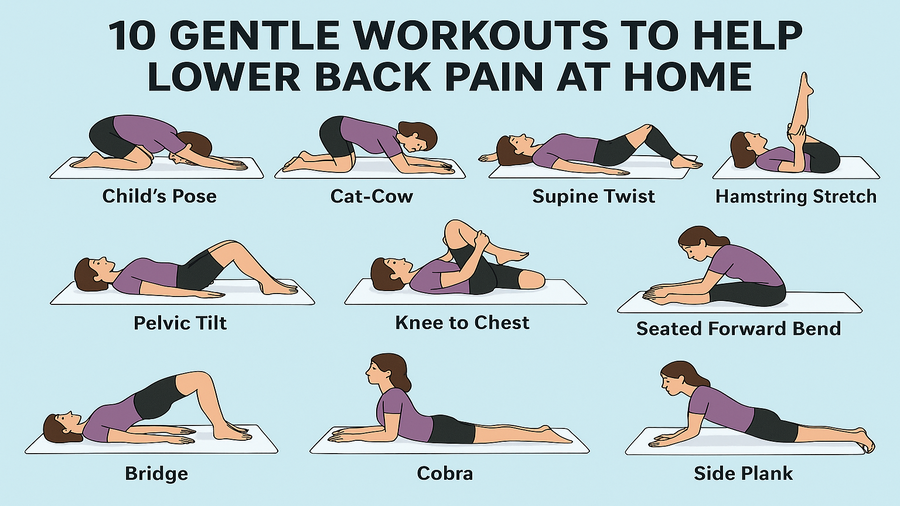

Try these pain-relieving at-home back exercises on World Spine Day.
Back pain is one of the most prevalent health issues in today's world, impacting professionals, homemakers, students, and even young children. The main causes of back discomfort include poor posture, extended sitting, and irregular activity. However, with the right workouts and proper posture, coupled with a few easy adjustments to our everyday routines, back discomfort can be greatly decreased. Maintaining normal alignment of the bones and joints, preventing weariness, and lessening the load on muscles and ligaments are all made possible by good posture. Conversely, bad posture can cause stiffness and muscle imbalances, which can ultimately lead to persistent back discomfort. Improving posture is important for maintaining spinal health for many years to come, according to Dr. Ranjith Unnikrishnan, Consultant-Orthopaedic Spine Surgeon, KIMSHEALTH Trivandrum. The health of your posture and spine are extremely important to your body. If left untreated, back discomfort can impair general quality of life, limit mobility, and lower productivity. Most people may avoid or lessen back pain without medicine if they are attentive, disciplined, and follow easy corrective measures, he said.
Published 16 Oct 2025 05:22 PM
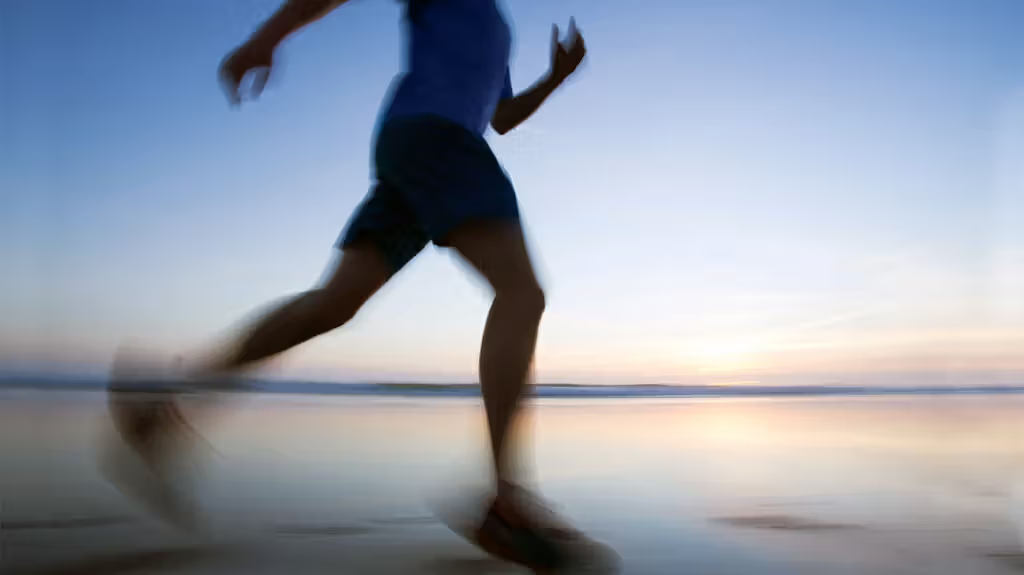

Reversing prediabetes without losing weight: How dietary modifications, fat distribution, and glucose management reduce the risk of diabetes by 70%
More than one in three persons in the US have prediabetes, which is characterized by high blood sugar levels that are not yet high enough to be diagnosed as diabetes. About 70% of people with prediabetes may develop type 2 diabetes if their condition is not controlled, which raises their risk of consequences like kidney damage, neurological issues, and heart disease. Reversing prediabetes has typically involved losing weight with medication, diet, or exercise. Recent studies, however, suggest a paradigm shift: enhancing insulin sensitivity and glucose management might be more important than simply losing weight. Lifestyle changes that focus on food, exercise, and fat distribution can result in remission and significantly reduce the long-term risk of type 2 diabetes.According to a recent study by German researchers at University Hospital Tübingen that was published in Nature Medicine, prediabetes can be corrected without weight loss. After a year of lifestyle changes, participants who were able to achieve normal blood glucose regulation but did not lose a considerable amount of weight had a 70% lower chance of acquiring type 2 diabetes over the course of five years than those who were unable to achieve remission. Whole grains, fruits, non-starchy vegetables, and legumes are good sources of carbs, whereas meals high in healthy fats include fatty fish, seeds, nuts, and olive oil. Normalizing blood glucose levels also requires controlling stress and getting enough sleep.In the US, prediabetes, characterized by high blood sugar that is not yet diagnosed as diabetes, affects more than one in three persons. In addition to concerns like heart disease, renal issues, and nerve damage, type 2 diabetes eventually develops in about 70% of people with prediabetes if left untreated. Reversing prediabetes has typically involved losing weight with medication, diet, or exercise.A recent study that was published in Nature Medicine indicates that prediabetes can be corrected without weight loss, according to a Morning News Today story. After a year of lifestyle interventions, participants who did not lose weight but achieved normal blood glucose regulation had a 70% lower risk of type 2 diabetes over the next five years than those who did not achieve remission, according to research from the University Hospital Tübingen in Germany."A lifestyle intervention can bring prediabetes into remission, meaning back to normal glucose values, even without weight loss, and this remission cuts future type 2 diabetes risk by approximately 70% over up to 10 years," co-author Dr. Andreas Birkenfeld told Medical News Today.
Published 14 Oct 2025 05:21 PM


Which of the three magnificent cats would most likely prevail in a fight involving tigers, leopards, and lions?
Big cats, from the sprawling African savannahs to the center of deep Asian jungles, captivate our collective imagination, especially when they are included in fictitious fights. In a conflict between a tiger, a leopard, or a lion, who would win? Let's examine the information.When it comes to sheer muscle and mass, tigers have the advantage. The largest of the great cats, male tigers can weigh up to 600 pounds or more. Although they usually weigh a little less, lions' stocky bodies nevertheless contain a lot of strength. Further investigation reveals that adult male tigers weigh 400–670 pounds, while male lions weigh 331–550 pounds. These parameters are validated by first-hand reports from animal observers: Even the greatest African lions are frequently greatly outnumbered by Bengal and Siberian tigers.Instead of speculating about who would prevail in a battle, we would much rather people focus their mental energies on preserving these amazing kitties. But because it's a frequently asked question, let's get started. The quick answer is that it depends on a variety of characteristics, including temperament, age, and size. Nonetheless, tigers typically have the upper hand. Tigers have an advantage in warfare since they are not only typically larger but also better at fighting when standing on their hind legs. Although there is much disagreement over the efficacy of this, some think that a lion's mane may offer some neck protection. When tigers and lions faced up in the Roman Coliseum, according to ancient legend, the tigers typically prevailed. Fortunately, though, those savage days are long gone.The likelihood of a tiger and lion encountering in the wild is nearly nonexistent nowadays. Lions are primarily located in Africa, with a small population surviving in a small area of India, whereas tigers traverse Asia. A tight affinity between these two species was shown at Big Cat Rescue between Cameron, a male lion, and Zabu, a white tiger. They were saved from a breeding environment that aimed to create ligers, a hybrid that we most definitely do not support. Although their humorous exchanges may have seemed like a quarrel, rest assured that it was all in good humor. And just so you know, we like to assume Zabu would have had the advantage.
Published 13 Oct 2025 05:19 PM


Lifestyle
Lifestyle covers a wide range of topics starting from Apparels, outdoor, dining, shoes and many other


Is the HPV vaccine revolutionary in the fight against cervical cancer?
Thus far, research and clinical studies have consistently demonstrated the high efficacy of HPV vaccinations in preventing cervical precancers and infections with cancer-causing virus strains.The most effective strategy for preventing and managing infectious diseases is immunization, which has helped save millions of lives globally. Prophylactic HPV vaccine development has been fueled by the finding that human papillomavirus (HPV) infection is linked to a range of benign diseases and malignancies. There are currently four HPV vaccinations on the pharmaceutical market: Cecolin, which was developed recently, Gardasil, Cervarix, and Gardasil-9. The safety and effectiveness of HPV vaccines in preventing diseases linked to HPV have been demonstrated by numerous research. More than 100 nations that are members of the World Health Organization have reported implementing HPV vaccination programs since the first HPV vaccine was licensed in 2006. On the other hand, fear of HPV vaccination, worries about its safety, and related negative effects have a big influence on HPV vaccination adoption efforts nationwide.Researchers in Sweden have demonstrated that broad use of the human papillomavirus (HPV) vaccine significantly lowers the proportion of women who will acquire cervical cancer, in what many global health officials are calling a landmark study. The effectiveness of the vaccine was most evident in girls who received vaccinations before the age of 17, as they showed an almost 90% decrease in the incidence of cervical cancer over the course of the 11-year study period (2006–2017) when compared to women who had not received the vaccination. The study involved nearly 1.7 million women."This is a cancer vaccine that can save lives," Jiayao Lei, Ph.D., of the Stockholm-based Karolinska Institute, stated as the study's principal investigator. Noel Brewer, Ph.D., a researcher at the University of North Carolina who focuses on HPV vaccinations and cancer prevention, described the study's findings as "incredibly powerful" on Twitter. The New England Journal of Medicine released the results on September 30.
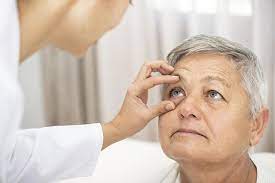

Eye Care After 30: 7 Crucial Pointers for Age-Proof Vision
From the time of our birth, our eyes begin to function. And they never stop working for the duration of our lives. A average person will have seen the world for close to 200,000 hours by the time they are 30 years old. This massive exposure to the outside environment combines artificial radiation from screens and interior illumination with natural radiation from the sun and wind. All of these lead to aging and a decline in the health of the eyes in addition to putting some strain on the eyes. These seven suggestions can help you ensure that, at thirty, you have decent vision.Use UV protection when spending a lot of time outside, such as UV-resistant glasses or sunglasses. This is especially crucial if you have pale skin, frequent higher elevations, or work in an occupation that requires a lot of outdoor exercise and sun exposure. In addition to being known to harm the eyes, UV light increases the risk of cataract development, age-related macular degeneration, and retinopathy. Our eyes are mostly made of water, and a tear film that primarily consists of water covers them. Together with proteins, enzymes, and electrolytes, water makes up this tear film. Our eyes can become dry from prolonged screen time and controlled air conditioning situations. Staying hydrated is possible with a lot of water consumption. Happy eyes are moist eyes. They improve your vision and lessen strain on your eyes.It has been demonstrated that outdoor activities and long-distance gazing both protect eyesight. Studies have shown that school-age children who participate in sports and other outdoor activities for two hours outside had a lower risk of developing progressive myopia, or deterioration of the eyesight. Pencil pushups are one type of exercise that helps strengthen the muscles in the eyes and keep vision from deteriorating with age.For optimal eye health, a diet high in zinc, vitamins A, C, and E, antioxidants like lutein and zeaxanthin, and vital fatty acids is recommended. Green leafy vegetables, carrots, beets, almonds, eggs, salmon, avocados, peaches, citrus fruits, and Indian gooseberries are good sources of these micronutrients.


Discover how changing your sleeping posture can help you get better sleep.
You are aware of the potential health benefits of sleep; a recent study determined that seven hours per night was the optimal amount. However, it now appears that whether you sleep on your side, flat on your back, or prone, there may be additional implications for your health and wellbeing. That may be a big difference, given that you spend a third of your day in bed. Experts suggest that while everyone's experience is different, some sleeping positions may help to prevent or improve specific health issues. For particular problems, these are the recommended sleeping positions.For optimal breathing, sleep on your side. It's possible that you've noticed that when you lie on your back, your snoring gets louder (or your partner has). According to neurologist Rachel Marie E. Salas, M.D., assistant medical director of the Johns Hopkins Center for Sleep and Wellness in Baltimore, "it can be significant if you have untreated obstructive sleep apnea."When the tissues at the back of your throat relax and seal, you are momentarily oxygen-starved, which is known as obstructive sleep apnea. This causes you to gulp or sputter for air during the night, waking you up several times. Fatigue and sporadic sleep are the outcome.Though Salas advises getting evaluated for sleep apnea, which is typically treated by wearing a CPAP (continuous positive airway pressure) equipment, snoring is generally resolved by cuddling up on your side. According to her, 80% of persons who fit the diagnostic criteria for apnea go undiagnosed. "However, it raises your risk of high blood pressure, cardiac arrhythmias, heart attacks, and strokes." Dementia risk is also associated with sleep apnea. If you have back pain, sleep on your back. If you're among the eighty percent of Americans who have suffered from back pain, how you sleep can determine whether you wake up feeling rested or like you need to crawl back into bed. Shaleen Vira, director of spine surgery research at UT Southwestern Medical Center in Dallas and assistant professor of orthopedic surgery and neurosurgery, states that sleeping on your back in the neutral position is the recommended posture to sleep in. Maintaining your spine's natural alignment and curvature is what it means to be in a neutral stance.To achieve that, select the "just right" bed pillow and arrange a pillow roll or rolled towel beneath your knees. According to Vira, using a pillow that is too large for your sleeping position might cause kyphosis, a forward bending of the neck that causes tension. Additionally, "sleeping with a pillow too small or without one at all can cause you to be hyperextended," leading to additional bodily pressures.


The chance of having a stroke may rise when exposed to air pollution.
September 28, 2023 – Within five days of being exposed to air pollution, there is a thirty percent increase in the risk of stroke, according to recent studies. 110 observational studies from around the globe that recorded the time of strokes and the amounts of common air pollutants five days after a stroke were examined by researchers.The journal Neurology reported the meta-analysis's findings. The effects of air pollution on human health go beyond respiratory and ocular conditions. The University of Jordan's Ahmad Tubasi, the lead researcher, stated on NBC News that "it also involves the brain and cardiovascular system."More than 18 million cases of ischemic stroke—the most frequent kind of stroke, which is brought on by a blood clot that travels to the brain—were included in the meta-analysis, according to NBC.Researchers discovered that exposure to nitrogen dioxide for up to five days before resulted in a nearly 30% increased risk of stroke. The risk increased by 26% in response to carbon monoxide exposure, 15% in response to sulfur dioxide exposure, and 5% in response to ozone exposure.Additionally, a 33% increased risk of dying from a stroke has been connected to brief exposure to nitrogen dioxide. Sulfur dioxide showed a 60% increase.Particulate matter particles that are inhaled irritate and inflame the lungs. According to Michael Kleinman, who was not involved in the research but works at the University of California, Irvine's Air Pollution Health Effects Laboratory, this sets off an immune system reaction that ultimately affects the cardiovascular system."What occurs in the lung and what occurs in the heart are directly related," he stated.The largest rise in particulate matter was observed for PM2.5 particles, which had a diameter of less than 2.5 microns. The study concluded that exposure to PM2.5 particles was linked to a 15% higher risk of stroke. A 14% increased risk of stroke was linked to increasing exposure to PM10, whereas a 9% larger risk was linked to increased exposure to PM1.A domino impact According to Michael Kleinman, co-director of the University of California, Irvine's Air Pollution Health Effects Laboratory, breathing in particulate matter—especially the smaller molecules—causes inflammation and irritation in the lungs, which sets off the body's immune response. Kleinman was not involved in the study.According to Kleinman, this has a cascade effect on the cardiovascular system. "What occurs in the lung and what occurs in the heart are directly related," he stated. In an attempt to fend off invaders, inflammation spreads throughout the body when air pollution triggers the immune response. Because of this inflammation, blood, clots, and plaque have a harder time passing through the arteries and veins. The body produces more thrombin, a clotting agent, in the blood at the same time. "The risk increases with the duration and intensity of an individual's exposure to air pollution," stated Dr. Julius Latorre, the head of Syracuse, New York's Upstate University Hospital Comprehensive Stroke Center, who was not involved in the new study. Because sulfur dioxide and nitrogen dioxide molecules are so small, they have a greater chance of slipping past the lung's filters and harming the body's cells or irritating the lungs to the point of an inflammatory response, according to Latorre. He continued, "This could be the reason these two pollutants were specifically associated with an increased risk of stroke death."


Are you unaware that you have a milk allergy?
Many individuals take no more than a moment to appreciate a creamy latte or a glass of milk. But for some people, this seemingly harmless pleasure might result in unanticipated health problems. It is not uncommon to be allergic to milk without even realizing it. In the US, about 2% of adult individuals have a milk allergy. These symptoms indicate that you may be allergic to milk without you realizing it, and they also explain the difference between lactose intolerance and milk allergy.A milk allergy can manifest quickly and silently. Symptoms frequently appear minutes after ingesting milk or milk products. Because of the wide variety of severity of these symptoms, it's important to pay attention to your body's signals. Keep an eye out for symptoms such as hives, nausea, diarrhea, abdominal pain, rash, itching, or tingling/swelling of the neck, tongue, or lips. Some people may experience severe symptoms such as breathing difficulties, tightness in the chest, or even anaphylaxis, which is a potentially fatal situation.It's critical to comprehend the intensity of your symptoms. A delayed diagnosis can result from the dismissal of mild symptoms or their being mistaken for other reasons. However, serious symptoms need to be treated very away. As soon as you notice any worrying symptoms following a milk consumption, you should get medical attention.Getting a correct diagnosis is essential if you think you may have a milk allergy. For reliable testing, you should consult a board-certified allergist. A thorough evaluation of the patient's medical history, a physical examination, and specialized tests such as blood or skin prick tests to identify antibodies associated to milk are all part of the diagnosing process.Getting a correct diagnosis is essential if you think you may have a milk allergy. For reliable testing, you should consult a board-certified allergist. A thorough evaluation of the patient's medical history, a physical examination, and specialized tests such as blood or skin prick tests to identify antibodies associated to milk are all part of the diagnosing process.A frequently used technique for identifying milk allergies is the skin prick test. Through a tiny prick, a minute quantity of milk protein is injected into the skin during this process. The doctor looks for any elevated bumps or indications of an allergic reaction after 15 minutes. This short and easy test can tell you a lot about how your body reacts to the proteins in milk.
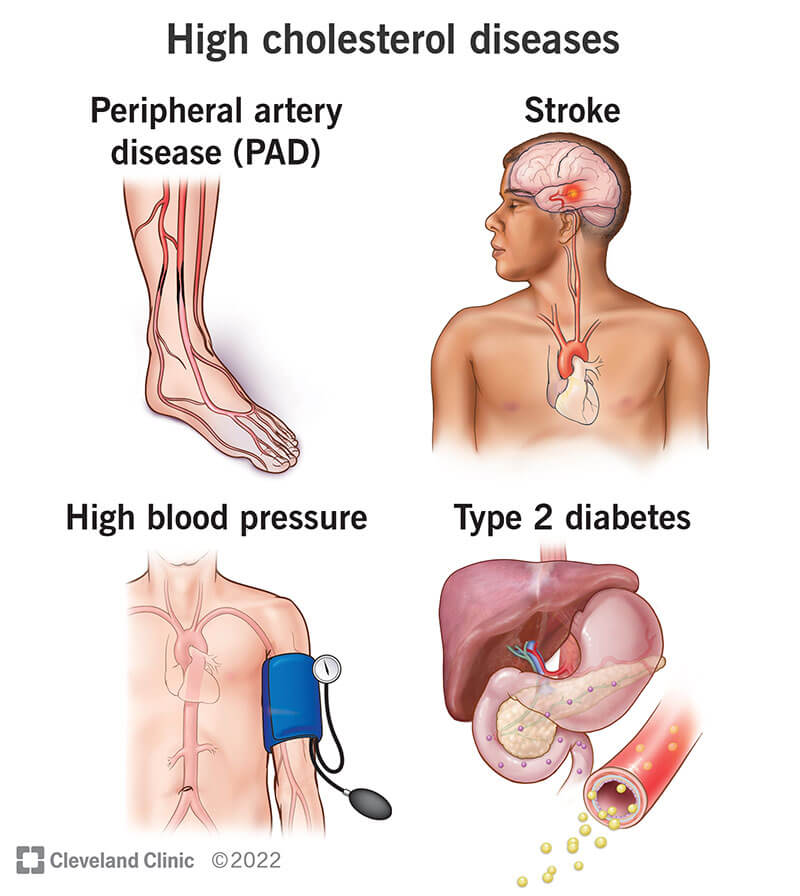

Be alert for signs of elevated cholesterol, which can develop into a deadly condition.It is essential to recognize the early indicators of excessive cholesterol in order to avoid cardiovascular issues
It is essential to recognize the early indicators of excessive cholesterol in order to avoid cardiovascular issues and preserve general health. High cholesterol levels, particularly elevated levels of LDL (low-density lipoprotein) cholesterol, can lead to the accumulation of plaque in arteries, increasing the risk of heart disease and stroke. Recognizing these signs early on can prompt lifestyle changes and medical intervention.Fatty deposits under the skin called xanthomas frequently take the form of yellowish nodules or lumps. These deposits, which might show up on the hands, elbows, knees, or buttocks, are a sign of elevated cholesterol levels.Arcus senilis, a white or grayish ring surrounding the iris of the eye, may indicate high cholesterol. Even though elderly persons are more likely to have this illness, its prevalence in younger people may indicate underlying lipid problems.Corneal arcus appears as a white or gray ring surrounding the cornea, much like arcus senilis. It is more frequently seen in older people and can be a clear sign of cholesterol accumulation. If it is present in younger individuals, a cholesterol test may be necessary.Increased cholesterol can play a role in the development of atherosclerosis, which lowers heart blood flow. Angina, or chest pain or discomfort, can happen when the heart muscle does not get enough blood that is rich in oxygen. Seeking prompt medical assistance is necessary if chest pain is persistent or recurrent.Breathlessness and exhaustion can be brought on by reduced blood flow from constricted arteries, particularly when engaging in vigorous exercise. These symptoms should be assessed by a medical practitioner as they may point to a damaged cardiovascular health.High cholesterol and hypertension frequently coexist, which adds to the burden on the cardiovascular system. Monitoring blood pressure on a regular basis is crucial, and high blood pressure that doesn't go away may need more research on cholesterol levels.Your blood contains a waxy material called cholesterol. Although cholesterol is necessary for the body to produce healthy cells, excessive cholesterol can raise your risk of heart disease.It is possible to get fatty deposits in your blood vessels if your cholesterol is high. When these deposits accumulate over time, your arteries can no longer adequately pump blood. Occasionally, such deposits may abruptly rupture and create a clot that results in a stroke or heart attack. Although bad lifestyle decisions are frequently the cause of high cholesterol, it can be prevented and treated. High cholesterol can also be inherited. To lower high cholesterol, a balanced diet, frequent exercise, and occasionally medication are helpful.


Do you not have enough vitamin B? Examine these signs and symptoms.
Among other vital biological processes, the synthesis of DNA, the creation of red blood cells, and the generation of energy all depend on vitamin B. Anaemia, beriberi, and pellagra can all be caused by a vitamin B shortage. A lack of any one of the eight B vitamins can cause a wide range of symptoms. These are the warning signs and symptoms of vitamin B deficiency, along with its causes and preventative measures.B vitamins are necessary to maintain optimal health. These vitamins, which include pyridoxine, biotin, folate, thiamin, riboflavin, niacin, pantothenic acid, biotin, and cyanocobalamin, are necessary for energy production, red blood cell creation, and DNA synthesis. Due to its water solubility, it's critical to maintain a regular intake through a well-balanced diet. To act quickly, it is essential to recognize the symptoms of a vitamin B shortage.The creation of energy depends on vitamin B, and deficiencies in this nutrient frequently result in weakness and chronic weariness. Low red blood cell counts, or anemia, are another consequence of low B vitamin levels. This may lead to a decrease in the amount of oxygen delivered to cells, which exacerbates general weakness and exhaustion.Frequently occurring signs of a vitamin B shortage include skin problems. There may be rashes, fissures, and inflammation, which is indicative of the vitamin's importance for healthy skin. B vitamins are necessary to maintain the integrity of the epidermal barrier and to encourage cell turnover. Any interference with these processes may result in a variety of skin issues.Supporting the neurological system is one of vitamin B's essential roles. Deficiency can cause nerve injury, which can cause symptoms in the hands, feet, or other parts of the body, such as tingling, numbness, or discomfort. Adequate B vitamin levels are necessary for proper nerve function, and any deficiency can impact peripheral nerves.What signs and symptoms indicate a lack of vitamin B? Those who are deficient in vitamin B may feel weak, tired, or generally low on energy. tingling or numbness in their feet and hands.
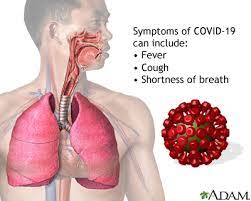

This COVID type can produce serious illness symptoms when it infects the lower lungs.
As of right now, we know that the novel COVID mutations are more likely to spread quickly and to evade the immune system. But a more grave issue has come to light thanks to a recent study. One of the novel COVID variants that is currently prevalent in many nations, according to a study published in the journal Cell, has the ability to more effectively infect human cells lining the lower lung and participate in virus-host cell membrane fusion—two characteristics associated with severe illness symptoms.The ancestor of the JN.1 variety, Pirola or BA.2.86, has been researched by the researchers. Originating from the early BA.2 variant and the more recent dominant XBB.1.5 variant, the BA.2.86 variant of omicron contains approximately 60 more spike protein mutations than the original, or parent, coronavirus. It also has over 30 more mutations than its close relatives. JN.1 is currently the dominant strain of omicron. Scientists were concerned that because of these alterations, the variation would be just as difficult to control as the original omicron outbreak in 2021–2022. It's a little concerning that BA.2.86 seems to have higher human lung epithelial cell infectivity than the other omicron variations. Additionally, it exhibits enhanced fusion activity with human lung epithelial cells, which is associated with infectivity, according to Liu, a professor in the Department of Microbial Infection and Immunity. This begs the question of whether this virus is more dangerous than more modern omicron variations.Serious Instances Approximately 14% of COVID-19 cases are severe and result in a bilateral lung infection. As the edema increases, liquids and debris flood your lungs. You may potentially develop pneumonia that is more serious. Mucus, fluid, and other cells that are attempting to combat the infection fill the air sacs.


Advice on preserving strong bones and joints as you get older
If you're struggling with joint issues or trying to avoid them, taking good care of your joints is like delivering a wonderful present to your future self. Consider these suggestions as your own road map for maintaining strong joints; it's an easy journey that involves continuing to be active, maintaining a healthy diet, and exercising awareness. These are not just general guidelines; they are especially helpful for people managing certain disorders relating to the joints. By heeding these advice, you're doing more than just taking care of your joints—you're moving in the right direction toward stronger, more resilient joints and an improved quality of life. The movement and functionality of our body are greatly influenced by our joints. Maintaining their health is essential for day-to-day activities, physical health, and a high standard of living.Maintaining healthy joints and bones is mostly dependent on engaging in regular physical activity. Exercises that increase strength, balance, and flexibility should be done. Strength training, yoga, swimming, and walking are a few exercises that can assist maintain bone density and joint function. To create a workout plan that works for your unique goals and constraints, speak with your healthcare professional.An eating plan that is well-balanced is essential for maintaining bone and joint health. Make sure you are receiving enough calcium and vitamin D, as these are necessary for strong bones. Good sources include dairy products, leafy greens, and fortified meals. Include meals high in omega-3 fatty acids as well, like flaxseeds and fatty salmon, as these foods have anti-inflammatory qualities that are good for joints. Your joints will be under more stress if you are overweight, especially in weight-bearing joints like your knees and hips. Sustaining a healthy weight lowers the chance of developing joint issues and improves joint function in general. You can reach and maintain a healthy weight by following a balanced diet and engaging in regular exercise.Drinking enough water is crucial for healthy joints. Water aids in the preservation of the synovial fluid, which lubricates the joints and promotes seamless motion by lowering friction. Make a conscious effort to drink enough water throughout the day, particularly if you exercise.Consume an abundance of calcium-rich foods. For women 51 years of age and above, and for men 71 years of age and above, the recommended daily dosage is 1,200 mg. Dairy products, almonds, broccoli, kale, tinned salmon with bones, sardines, and soy products like tofu are good sources of calcium.


What can't hurt, what doesn't work, and what are some cold cures
Sneezing, coughing, sore throats, runny or stuffy noses, and mild weariness are all common symptoms of a cold. As the cold worsens, other symptoms like body pains, headaches, and a low-grade fever may appear. These respiratory symptoms usually appear gradually, helping to differentiate between more sudden illnesses and colds. Although having a cold can be uncomfortable, there are a number of preventative steps and treatments that can speed up your recovery and reduce symptoms. Although there isn't a quick fix for the common cold, using these techniques can hasten healing and ease discomfortGetting the rest your body needs is one of the best strategies to fight off a cold. Sufficient sleep and relaxation are necessary for the immune system to perform at its best. Prioritize getting enough sleep when you're sick in order to save energy and hasten your recuperation.It's important to stay well hydrated when you're sick with a cold. Water keeps your throat moist and thins mucus, making it easier to expel. In addition to providing hydration, warm liquids such as herbal teas, broths, and hot water with honey and lemon can help relieve sore throats. Steer clear of alcoholic and caffeinated drinks as these can exacerbate dehydration.Think about using over-the-counter drugs to treat particular cold symptoms. While expectorants and cough suppressants can aid with cough symptoms, decongestants can help with nasal congestion. Acetaminophen or ibuprofen are two pain medications that can help lower fever and ease body pains. Observe the suggested dosage and seek medical advice if you have any questions or pre-existing medical issues.Sinus pressure and nasal congestion can be reduced with the use of nasal saline irrigation. To clear your nasal passages of mucus and allergens, use a saline solution. Using a neti pot or saline nasal spray, this easy-to-use yet powerful treatment helps facilitate clearer breathing and expedites the healing process.
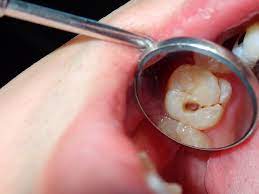

What causes cavities to occur? Actions one can do to prevent them from expanding
A cavity, sometimes referred to as dental caries, is a hole in a tooth brought on by dental disease. The hard outer layer of teeth, called enamel, erodes when acids from the mouth wear it down, causing cavities. Everyone is susceptible to cavities, but they can be prevented with regular dental cleanings and excellent oral hygiene.On the surface of teeth, they are caused by bacteria that convert sugar to acid. The Streptococcus mutans bacteria is the most common aggressor. Microorganisms form a sticky film known as plaque. Since calcium and phosphate make up the majority of the enamel on your teeth, the acids in plaque demineralize it by removing these minerals. This erosion leaves the enamel with tiny holes in it. When acid damage reaches the layer of dentin underlying the enamel, a cavity forms.Tooth decay can happen to anyone at any age, even though dental cavities are more common in children. This is because a lot of children overindulge in sugary foods and drinks and don't wash their teeth properly or often enough. Cavities can also affect adults. Occasionally, the edges of cavities that were filled as children may develop new degeneration. Gum recession is more prevalent in adulthood as well. Cavities may result from this condition exposing the base of your teeth to plaque.Dental deterioration is exacerbated by inadequate consumption of vitamin D. Experiencing dry mouth or a medical condition that reduces salivary flow? Eating sticky or sweet meals that stick to teeth is another risk factor for cavities. Regular consumption of carbonated drinks, like soda, can also lead to tooth pits and cavities. Acid reflux heartburn can also erode teeth. Among the other causes of tooth decay are eating late at night and not brushing your teeth enough.some old practice called "oil pulling" involves swishing some oil, like coconut or sesame, about in your mouth for about twenty minutes, and then spitting it out. Claims that oil pulling "removes toxins" from the body are unsupported by any evidence. But according to a small, triple-blind, placebo-controlled research trial, oil pulling with sesame oil reduces plaque, gingivitis, and oral bacterial counts just as well as mouthwash with chlorhexidine. Further investigation is necessary to confirm these effects.


Shilpa Shetty switches her boss mode on, the stylish way, in a brown one-shoulder leather dress
One celebrity whose sense of style encourages followers to look their best is Shilpa Shetty. She combines modern charm with ethnic elegance in her wardrobe. The divas showcased her "hot shoulder" look and how it was for the promotions of her upcoming web series Indian Police Force. Shilpa chose an amazing latex brown bodycon dress from the House of CB. The one-shoulder outfit had a provocative thigh-high slit and a gathered waist. She could show off her trim figure because the clothing fit her like a second skin. Shilpa accessorised her ensemble with a chic, muted makeup look. The aesthetics were perfectly complemented by peach lips, muted smokey eyes with long lashes coated in mascara, and blushed, highlighted cheeks. Given her attire, so Shilpa Shetty, who is known for "serving justice with a side of fashion," chose an all-black outfit from the Mugler collection. She looked bossy-babe in her asymmetrical hem ensemble, which included a quarter-sleeved top with padded shoulders and a corseted top. A pair of matching jeggings that fit her like a glove elevated her edgy quotient. In terms of makeup, Shilpa opted for a heavy-duty look that comprised rosy-highlighted cheeks, glossy pink lips, on-fleek winged eyeliner accompanying mascara-laden long lashes, and well-sculpted eyebrows. Star-shaped earrings, statement rings, and a bracelet sealed her rough-and-tough avatar. Shilpa styled her hair in a chic braided fishtail.
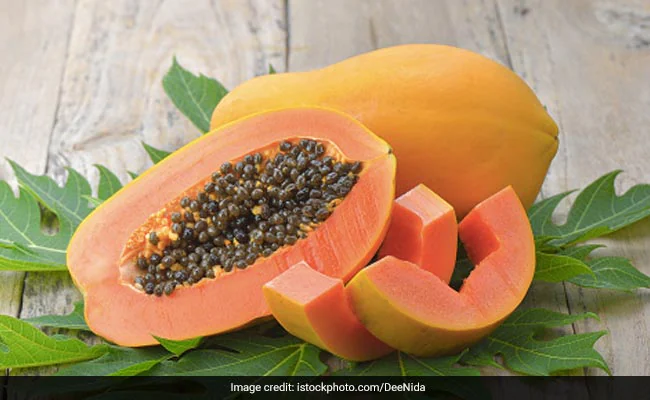

Five Justifications for Eating Papaya in the Winter
"1. Papaya can aid in raising body temperature. It is frequently referred to as ""hot fruit."" Papayas also aid in the efficient balancing of Vata and Kapha. 2. Rich in antioxidants and vitamin C, papayas can strengthen your immune system. A robust immune system aids the body in fending off disease. A robust immune system can aid in preventing winter-related illnesses during these months. 3. Eat papaya if you have digestive problems in the winter. Papayas contain the papain enzyme, which aids in digestion. It can aid with bloating, constipation, and other symptoms. Additionally, a high fiber diet encourages bowel movements.4. Every year, there is a rise in the incidence of heart disease during the winter. Consequently, maintaining a heart-healthy diet and way of life is essential. 5. It can be challenging to maintain proper hydration in the winter. Still, it's important to maintain adequate hydration during the winter months. Papayas' high water content can help you drink more water overall and stay more hydrated. "


Bollywood welcomes the New Year in style, from Kareena-Saif to Bhumi Pednekar
Bollywood stars are ringing in the New Year with unmatched style and elegance as we embrace 2024 with open arms. The holidays are a time for celebration, but they also give our favorite celebrities a platform to show off their impeccable sense of style. See how some of the biggest names in the business, like Bhumi Pednekar and Kareena Kapoor, rang in the New Year in classic B-town fashion.Kareena Kapoor shared a peek of their New Year's celebration with her husband Saif Ali Khan and their adorable children Taimur and Jeh. The picture of elegance, Kareena, posted a mirror selfie with Saif fiddling with his bow tie. Kareena looked stunning in a black and golden velvet salwar suit, while Saif looked dapper in a traditional white tuxedo. In a different picture, Jeh looked stunning in a cable knit sweater and pants, while young Taimur showed off his sense of style in a grey blazer-pant set, channeling his dad's dapper appearance.


"This unexpected English city was recently taken over by Chanel for their latest show. "
"Happy Chanel Day!" cries someone from a hotel in Manchester's city center across the dimly lit parking lot. To the surprise of both fashion insiders and the general public, the French fashion house has descended on England's third most populous city for its latest Métiers d'Art event — an annual catwalk dedicated to the brand's community of artisans — on a rainy Thursday night in December.


"The unexpected background of the Fair Isle sweater "
"Is a piece of clothing as cherished by the royal family as it is by JLo? Or will it be as relevant in 2023 on the catwalks as it was in 1960 knitting catalogs? The response is unexpectedly joyous. From 18th-century fishermen to Mick Jagger, the Fair Isle knit, a two-stranded knitting tradition that originated off the coast of Scotland, has been a wardrobe staple for well over a century. Luxury labels like Dries van Noten, Ralph Lauren, Thom Browne, Chanel, Celine, Balenciaga, Raf Simons, and Versace have all sent their interpretations of the heritage knit down the catwalk in the past five years. Designer Molly Goddard, who is based in London, has even turned the pattern into an unofficial hallmark by matching it with a structured Fair Isle-style"


Industry observers claim that opportunities for innovation and growth are presented by sustainability.
"Delhi, New: At the panel discussions ET Digital hosted at the ET MSME Awards 2023 in Delhi on Friday, industry representatives stated that sustainability is essential to innovation and business expansion. Participants unanimously agreed that, in the face of ongoing geopolitical and economic difficulties, businesses must prioritize sustainability if they hope to succeed in the rapidly changing business environment of today. The sustainability potential of seaweed cultivation was emphasized by Tanmaye Seth, Director at Aquagri Processing Private Ltd. Seaweed is a macroscopic algae that is grown in marine and coastal waters. ""The sole purpose of aqua agriculture, which was founded in 2008, was to encourage seaweed farming in India and to support sustainable means of subsistence for the coastal communities. Women make up about 75% of our workforce. We started as an initiative that developed into a long-term business, and we currently process seaweed. "


Cameron Diaz believes that "we should normalize separate bedrooms" after eight years of marriage.
Benji Madden, an American musician, and Hollywood actress Cameron Diaz have been blissfully married for eight years. In May 2014, the two got together at a party that the actress threw at her house. The couple announced their engagement in December 2014, a few months later. Cameron and Benji exchanged vows in a Jewish wedding one month later in January. Through surrogacy, they welcomed a daughter in 2019. That being said, the big news was revealed in January 2020. Even after all this, it seems Cameron Diaz surely enjoys her space. We say this as the actress has urged to “normalise separate bedrooms” for married couples. People magazine reported that Cameron Diaz, in conversation with Yes Man star Molly Sims and Emese Gormley on the latest episode of their



















